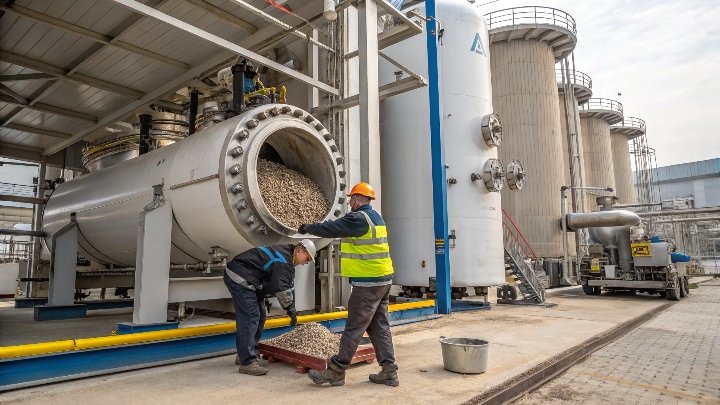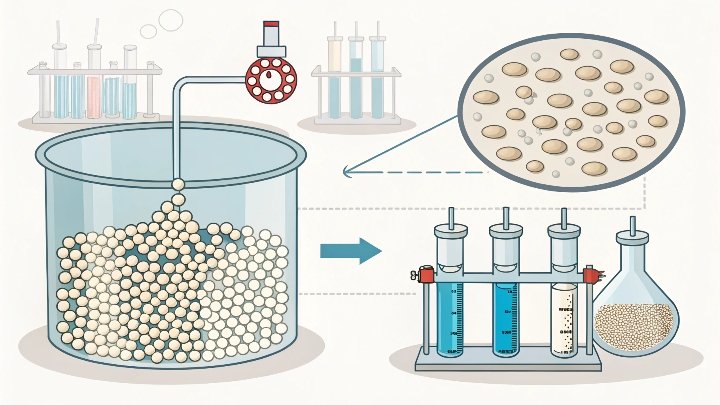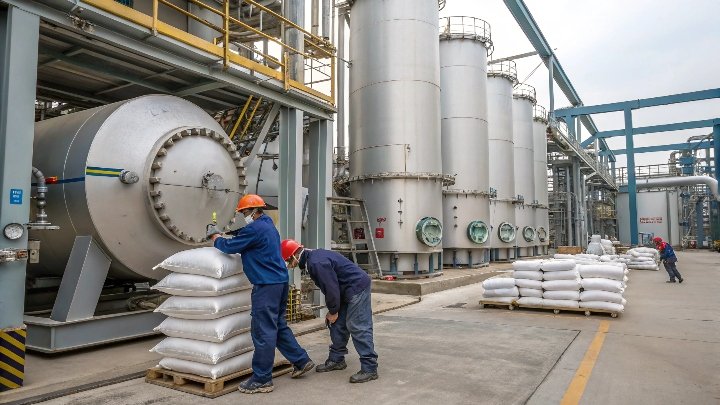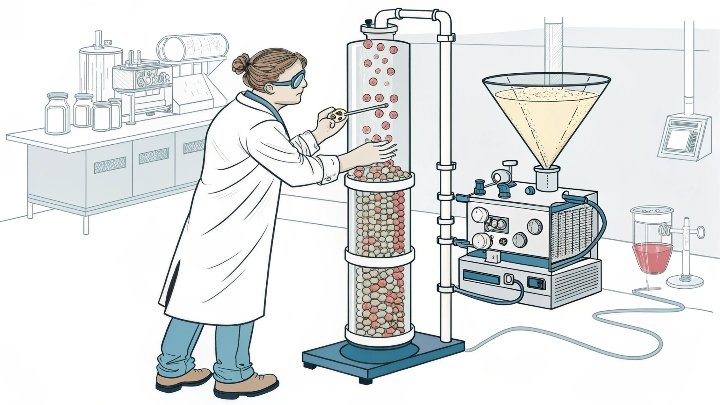Most plants struggle with one crucial part of sieve operation: loading. Unfortunately, this mistake leads to performance issues, potentially costing millions. Let's see how it happens.
Inaccurate loading can lead to permanent damage of molecular sieves, reducing their efficiency and resulting in a significant cost. Here are eight vital checks to ensure the proper loading of your sieves.
It’s easy to overlook small details during the loading process, but these mistakes add up over time. To avoid costly errors and ensure optimal performance, let’s dive into the critical steps you should follow.
The Hidden Mistake That's Costing Plants $1.2M Annually (And How to Fix It)
Many plants are unknowingly damaging their molecular sieves during loading. This hidden mistake can lead to performance loss and cost a plant up to $1.2M annually.
One major mistake in the loading process is exposing the molecular sieve to moisture or contaminants. This permanently damages the sieve's adsorption capacity. Here's how you can prevent this.
The molecular sieve is highly sensitive to moisture and contaminants. Even before loading, exposure to air can lead to irreversible damage. The sieve absorbs water vapor and CO2, reducing its efficiency in adsorbing target gases. When this happens, no matter how much you regenerate the sieve, its adsorption capacity cannot be restored.
To avoid this, the loading environment is key. The molecular sieve should never be exposed to the open air before it’s loaded into the system. It needs to be kept dry and free from any contaminants such as oil mist or corrosive gases. This ensures that the sieve remains in peak condition, maintaining its adsorptive capabilities.
There is also the issue of handling the sieve itself. Wearing appropriate protective gear, like work clothes and masks, can help avoid contamination during the loading process. An oxygen mask is necessary in more dangerous environments, such as inside the adsorption tower, where there’s a higher risk of exposure to hazardous materials.
The loading process can be simplified into a few basic steps: first, ensure that the environment is free from moisture and contaminants. Second, keep the sieve sealed until it’s ready to be used. Finally, ensure proper sealing of the adsorption tower after loading to prevent exposure to air. By following these simple steps, you can preserve the performance of the sieve, saving your plant significant costs in the long run.
Check #3 Will Shock You: Most Overlooked Step in Sieve Maintenance
If you’re not already doing this, you're leaving money on the table. This simple yet often overlooked step could drastically improve your sieve’s lifespan.
Check #3 is critical and often neglected: ensuring that the molecular sieve is packed correctly. Improper packing can lead to gaps, reducing its efficiency and lifespan. Here's how to do it right.
One of the most overlooked parts of the loading process is how tightly the molecular sieve is packed in the adsorption tower. After loading, it's essential to shake the tower to ensure that the sieve is tightly packed. If the sieve isn’t packed properly, it can result in gaps within the bed, reducing the overall efficiency of the adsorption process. The sieve may not perform as expected, which leads to reduced capacity and effectiveness. This problem is especially important to address since once molecular sieves lose their performance, regeneration might not fully recover their original adsorption capability.
To prevent this, make sure that after loading, you take the time to shake or vibrate the adsorption tower to ensure even packing. This will eliminate any voids that could form and ensure the sieve is evenly distributed. This will not only maximize efficiency but also extend the sieve’s useful life, ensuring it operates at full capacity throughout its lifespan.
Besides, once the packing is complete, it’s crucial to seal the adsorption tower promptly. This keeps the sieve isolated from moisture, dust, and other contaminants that could damage it. Proper sealing also ensures that the tower maintains its pressure and performance under operational conditions, avoiding potential failure.
Ensuring proper packing and sealing is a simple step that could save you from expensive repairs or downtime. Make it a standard part of your loading procedure to avoid costly mistakes.
How Proper Loading Can Slash Your Downtime by 60% – Case Study Inside
Did you know that incorrect loading could be the reason behind your plant’s unplanned downtimes? Learn how proper loading can significantly cut your downtime and improve overall efficiency.
Proper loading isn’t just about protecting the sieve. It’s a key factor in reducing downtimes. By following these steps, you can cut your downtime by as much as 60%, as seen in this case study.
In one of our case studies, a plant was experiencing frequent downtimes and performance issues with their molecular sieves. After a detailed review, we identified that improper loading was the primary cause. The sieves were being exposed to moisture, and the adsorption tower wasn’t being sealed properly. As a result, the sieves were degrading prematurely, leading to costly downtime for regeneration and repair.
We recommended that they overhaul their loading process by introducing a few simple steps. First, they created a controlled environment for the sieves, ensuring no exposure to moisture or contaminants. They also implemented the crucial step of shaking the tower after loading to ensure the sieves were tightly packed. Lastly, they sealed the tower immediately after loading to prevent exposure to air.
The results were significant. After implementing these changes, the plant experienced a 60% reduction in downtime. The sieves lasted longer and performed better, which translated into better overall system efficiency and reduced maintenance costs.
This case study highlights how improving the loading process isn’t just a technical necessity—it’s a financial investment. A small change in the way you load your molecular sieves can have a massive impact on your plant’s performance and bottom line.
Conclusion
By paying attention to these crucial loading steps, you can significantly improve sieve performance, reduce downtime, and save your plant millions annually.






